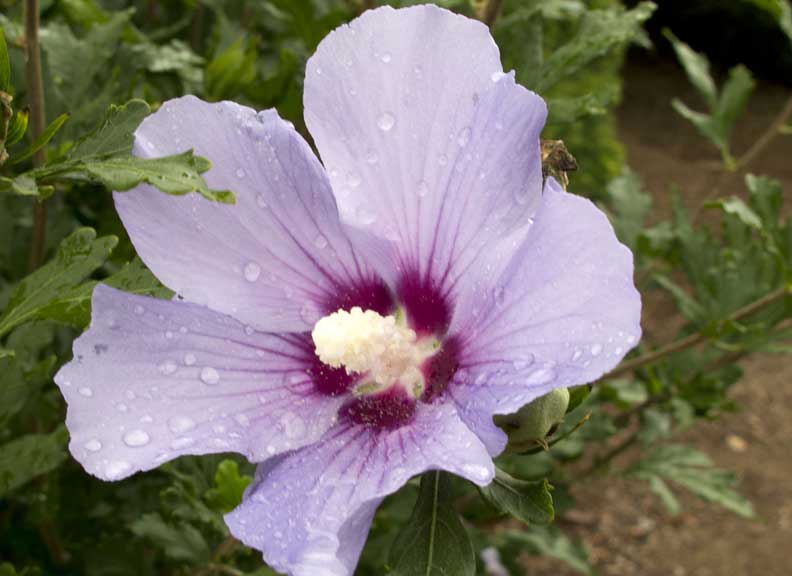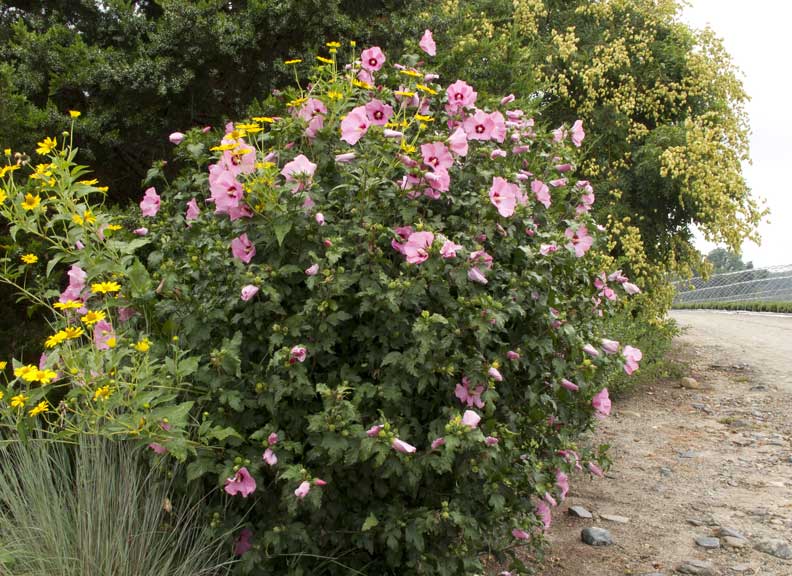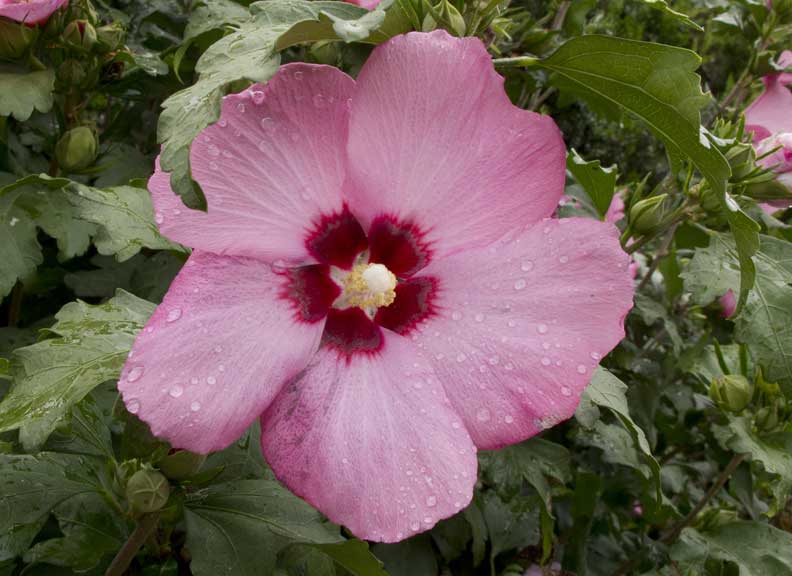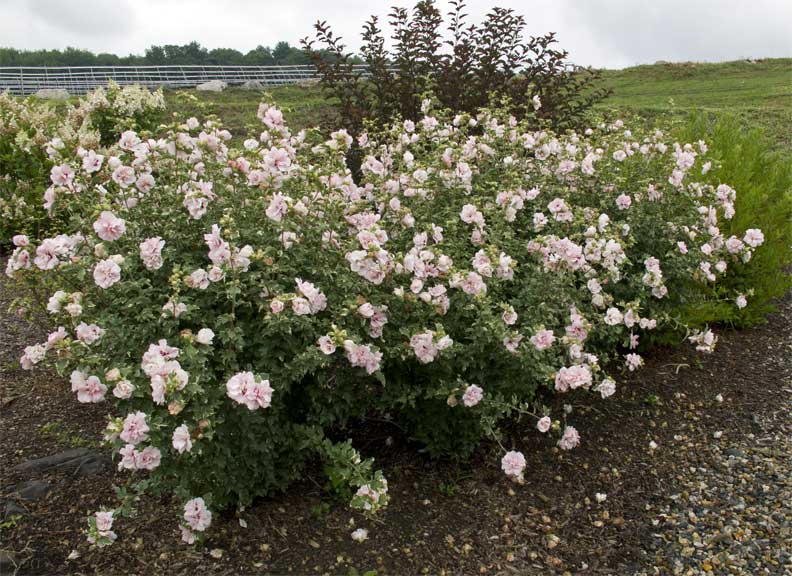All About Rose of Sharon
We’re lucky enough that you can grow three types of Hibiscus here: one tropical that loves to spend the summer outdoors and two hardy that live outside year-round. Of the two hardy types, one has stems that die back to the ground each winter (we call this “herbaceous”) and the other has branches that are permanent. It’s this latter type that we sell in our woody plants department and it’s referred to as Rose of Sharon. Where the name Rose of Sharon comes from seems unclear (check it out on Wikipedia, it’s a mess!), but did you know it’s the national flower of South Korea?
Hibiscus flowers, once open, only last for one day. The plant, however, keeps cranking out flowers for weeks in summer and won’t miss a beat. Keep them in a sunny spot with regular fertilization and they’ll reward you with lots of color that may even draw the eye of a passing hummingbird. Hardy Hibiscus doesn’t come in as many colors as the tropical Hibiscus, but they are easy to take care of and are long-lived. Their only drawback is the propensity for some to set prodigious seed and volunteer their babies whether you want them or not.
Rest assured, though, that they are easy to remove (or transplant if you want to keep them or give them away) and don’t seem to be invasive in wild areas. You can also give them a light trimming during winter to both shorten stems and remove those seed pods. Like Panicle hydrangeas, Rose of Sharon can be grown in the style of small trees, and we stock some that have been already started that way. Their flowers come in shades of pink, white – usually with a red eye in the center – and even lavender-blue. As one of the taller shrubs, they do well as the focal point in a mixed bed or as a border in front of which you can plant shorter shrubs or a medley of perennials.
I’m a gardener who loves mixing plants to get living “bouquets” as combinations of different flower colors and shapes (and foliage!). Try using the “black”-leaved Elderberries or Ninebark to set off the flowers and white-edged Euonymus to complement the foliage. Perennial Culver’s-root (Veronicastrum) and various grasses would pair up well in that they grow taller than most perennials, and tall-growing Butterfly Bush and Summersweet would make good shrubby companions.
by Miri Talabac, Woody Plant Buyer







Hi Guys,
Question please: Can I grow a Rose of Sharon in a pot? Can I grow it indoors? too?
I look forward to your reply!
Jason
Hi Jason
I have grown a few of these over the years. Mine did best in full sun/partial shade and they will grow in a large pot on the deck but I never had any luck getting them to overwinter in a pot. They need to go dormant for the winter so I don’t think they would do very well inside. Hope this helps.
Larry B